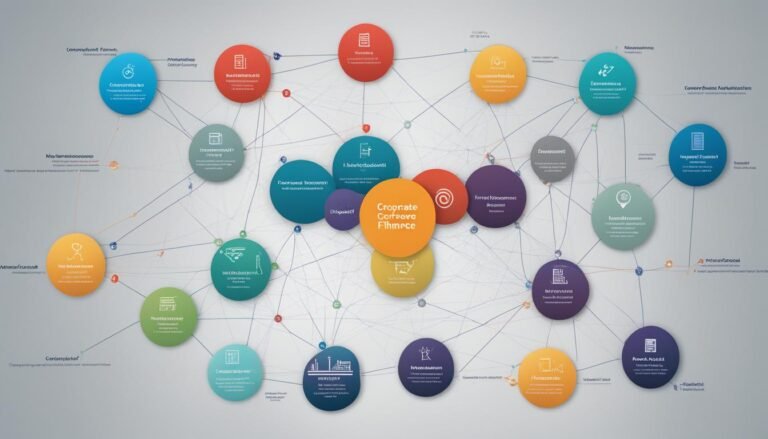Detecting and Preventing Financial Fraud: Techniques and Technologies
As financial transactions become increasingly digitalized, the risk of fraud looms larger, necessitating robust mechanisms for detection and prevention.
From sophisticated fraudulent pattern recognition to cutting-edge machine learning algorithms, a plethora of techniques and technologies have emerged to safeguard against illicit activities.
Real-time transaction monitoring and biometric authentication systems offer a glimpse into the future of secure financial interactions.
The integration of blockchain technology and AI-powered risk assessment tools further fortifies defenses against potential threats.
Stay tuned to explore how these advancements are shaping the landscape of financial security.
Key Takeaways
- Utilize advanced data analytics and algorithms for detecting fraudulent patterns effectively.
- Implement real-time monitoring with AI for immediate detection and prevention of financial fraud.
- Integrate blockchain technology for secure and transparent transactions to resist fraud.
- Enhance security with biometric measures and cybersecurity protocols for robust fraud prevention.
Fraudulent Pattern Recognition
Utilizing advanced data analytics, financial institutions employ sophisticated algorithms to detect and identify fraudulent patterns within large sets of transaction data. Behavioral analytics play a vital role in this process by examining patterns of behavior associated with potentially fraudulent activities. By analyzing variables such as transaction frequency, amounts, locations, and timing, financial institutions can create profiles of typical customer behavior. Any deviations from these established patterns can raise red flags for potential fraud.
Transaction verification is another key component in the arsenal of tools used for fraudulent pattern recognition. By verifying the legitimacy of transactions through various means such as two-factor authentication, biometrics, and secure tokens, financial institutions can add layers of security to prevent fraudulent activities. Additionally, real-time transaction monitoring enables the immediate detection of suspicious activities, allowing for timely intervention and prevention of potential financial losses.
Machine Learning Algorithms
Machine learning algorithms play an essential role in financial fraud detection by enabling the creation of sophisticated fraud detection models.
These algorithms utilize anomaly detection techniques to identify irregular patterns in financial transactions.
Feature engineering methods are employed to extract relevant information and enhance the accuracy of fraud detection systems.
Fraud Detection Models
In the domain of financial fraud detection, the implementation of sophisticated machine learning algorithms has greatly enhanced the efficacy of fraud detection models. These models utilize various techniques such as behavioral analysis and predictive modeling to identify patterns indicative of fraudulent activities. By analyzing historical data and user behaviors, machine learning algorithms can detect anomalies and deviations from normal patterns, enabling the early detection of potential fraud. Below is a table showcasing some common machine learning algorithms used in fraud detection:
| Algorithm | Description |
|---|---|
| Random Forest | Ensemble learning method utilizing decision trees. |
| Logistic Regression | Statistical method for binary classification. |
| Gradient Boosting | Iteratively builds multiple weak models to create a strong model. |
Anomaly Detection Techniques
The focus shifts to exploring Anomaly Detection Techniques in the domain of financial fraud detection. The emphasis lies on identifying irregular patterns that deviate from normal behavior through the application of machine learning algorithms.
- Behavioral analysis: Understanding typical user behaviors to detect deviations.
- Statistical modeling: Leveraging statistical methods to identify anomalies.
- Machine Learning Algorithms: Utilizing algorithms like Isolation Forest or One-Class SVM.
- Unsupervised Learning: Detecting anomalies without labeled data.
- Real-time Monitoring: Continuous monitoring for immediate anomaly detection.
Feature Engineering Methods
Effective feature engineering methods play a pivotal role in enhancing the performance and interpretability of machine learning algorithms for financial fraud detection. Data preprocessing techniques are vital for preparing the data before feature engineering, ensuring quality inputs for the models. Feature selection strategies help in choosing the most relevant features, reducing dimensionality and improving model efficiency. Overfitting prevention techniques such as regularization methods aid in generalizing the model to unseen data, enhancing its robustness. Model evaluation methods are essential for evaluating the model's performance and ensuring its reliability in detecting financial fraud accurately. By implementing these feature engineering methods diligently, financial institutions can improve their fraud detection systems and minimize potential risks effectively.
| Feature Engineering Methods | Importance |
|---|---|
| Data Preprocessing Techniques | Essential for preparing quality data |
| Feature Selection Strategies | Reduce dimensionality, improve efficiency |
| Overfitting Prevention Techniques | Enhance model generalization |
| Model Evaluation Methods | Evaluate performance and reliability |
Real-Time Transaction Monitoring
Real-time transaction monitoring is essential in the domain of financial fraud detection and prevention. Incorporating AI for fraud detection and leveraging pattern recognition algorithms play pivotal roles in detecting suspicious activities promptly.
AI for Fraud Detection
Utilizing artificial intelligence algorithms for fraud detection in real-time transaction monitoring is a cutting-edge approach in modern financial security systems. AI driven fraud prevention and fraudulent behavior analysis are essential components in enhancing the efficacy of fraud detection mechanisms.
Here are five key advantages of employing AI in real-time transaction monitoring:
- Enhanced accuracy and efficiency in identifying suspicious activities.
- Ability to analyze large volumes of data rapidly for timely fraud detection.
- Continuous learning capabilities allow for adaptation to new fraud patterns.
- Reduction in false positives, minimizing unnecessary alerts for legitimate transactions.
- Real-time alerts and notifications enable immediate action against potential fraud.
Pattern Recognition Algorithms
Pattern recognition algorithms play an important role in real-time transaction monitoring by enabling the automated identification of irregularities and potential fraudulent activities within financial systems. These algorithms utilize behavioral analysis and deep learning techniques to detect patterns indicative of fraudulent behavior. By analyzing vast amounts of transaction data in real-time, these algorithms can quickly flag suspicious activities for further investigation, helping financial institutions prevent fraud before it occurs. The table below illustrates the key features of pattern recognition algorithms in real-time transaction monitoring:
| Features | Description |
|---|---|
| Behavioral Analysis | Examines patterns of behavior to identify deviations that may indicate fraud |
| Deep Learning Techniques | Utilizes advanced neural networks to recognize complex patterns in data |
| Real-Time Monitoring | Constantly monitors transactions as they occur for immediate detection |
| Automated Alerts | Generates alerts for potential fraud, prompting swift action by analysts |
Biometric Authentication Systems
Biometric authentication systems have emerged as an important tool in enhancing the security and accuracy of financial fraud detection and prevention measures. These systems utilize unique biological characteristics for identity verification, offering a higher level of security compared to traditional password-based methods. Here are five key points highlighting the significance of biometric security in fraud prevention:
- Essential Security: Biometric authentication provides a more secure way of verifying identities, as it is based on unique physical attributes that are difficult to replicate.
- Precision: Biometric systems offer a high level of accuracy in verifying individuals, reducing the risk of fraudulent activities.
- User-Friendly: Despite being advanced in technology, biometric systems are user-friendly and convenient for individuals to use.
- Multi-Factor Authentication: Biometric security can be integrated as part of a multi-factor authentication process, further strengthening security measures.
- Continuous Advancements: Ongoing advancements in biometric technology continue to improve the effectiveness of these systems in combating financial fraud.
Biometric authentication systems play an important role in ensuring the integrity of financial transactions and safeguarding against fraudulent activities.
Blockchain Technology Integration
The integration of blockchain technology in financial systems has revolutionized the way transactions are conducted and recorded, offering unprecedented security and transparency. Blockchain's security features, such as immutability and decentralization, make it highly resistant to fraud and tampering. Each transaction is securely recorded in blocks that are linked together in a chain, creating a transparent and tamper-evident ledger. This inherent security reduces the risk of fraudulent activities within financial systems.
Additionally, blockchain technology enables advanced fraud prevention mechanisms through smart contracts and consensus algorithms. Smart contracts are self-executing contracts with the terms of the agreement directly written into code. These contracts automatically execute and enforce agreed-upon actions when predefined conditions are met, reducing the potential for human error or malicious activities. Consensus algorithms make sure that all network participants agree on the validity of transactions, further enhancing security and trust in the system.
Incorporating blockchain technology into financial systems enhances security, transparency, and overall trust, making it a powerful tool in the fight against financial fraud.
AI-Powered Risk Assessment
Utilizing artificial intelligence (AI) technology for risk assessment in financial transactions has greatly enhanced the accuracy and efficiency of identifying potential fraudulent activities. AI-powered risk assessment incorporates advanced techniques such as behavioral analysis and predictive modeling to analyze vast amounts of data in real-time, enabling financial institutions to detect unusual patterns and anomalies that may indicate fraudulent behavior.
Here are five ways AI-powered risk assessment is transforming the landscape of financial fraud detection:
- Real-time Monitoring: AI algorithms continuously monitor transactions, identifying suspicious activities as they occur.
- Pattern Recognition: AI systems can recognize complex patterns in data that may not be apparent to traditional fraud detection methods.
- Risk Scoring: AI assigns risk scores to transactions based on various parameters, enabling quick decision-making on potentially fraudulent activities.
- Anomaly Detection: AI can flag unusual behaviors or deviations from normal patterns for further investigation.
- Adaptive Learning: AI systems learn from new data to improve their predictive capabilities over time, staying ahead of evolving fraud tactics.
Data Analytics for Fraud Detection
Data analytics plays an important role in enhancing fraud detection capabilities within the world of financial transactions. By utilizing advanced techniques such as behavioral analysis and predictive modeling, financial institutions can better identify suspicious activities and potential instances of fraud.
| Data Analytics Techniques | Description | Benefits |
|---|---|---|
| Behavioral Analysis | Utilizes patterns of behavior to detect anomalies or deviations from normal activities. | – Helps in identifying unusual transactions that may indicate fraudulent behavior.<br>- Enhances the accuracy of fraud detection systems. |
| Predictive Modeling | Uses historical data to forecast future outcomes and identify potential risks. | – Enables proactive measures to be taken to prevent fraud before it occurs.<br>- Improves decision-making processes by providing insights into potential fraud trends. |
Cybersecurity Protocols for Prevention
Effective cybersecurity protocols are essential for preventing unauthorized access and safeguarding sensitive financial information. Implementing robust measures is vital to guarantee the integrity of financial systems. In the domain of financial fraud prevention, cybersecurity protocols play a pivotal role in deterring malicious actors. Leveraging advanced technologies and strategies can fortify defenses against cyber threats. Two key elements in this domain are behavioral analysis and risk mitigation.
- Behavioral Analysis: Monitoring and analyzing user behavior can help detect anomalies that may indicate a potential security breach.
- Risk Mitigation: Identifying and addressing vulnerabilities in the system can greatly reduce the likelihood of a cyberattack.
- Multi-factor Authentication: Adding layers of authentication can enhance security by requiring multiple forms of verification.
- Encryption: Utilizing encryption techniques can safeguard data in transit and at rest, preventing unauthorized access.
- Regular Security Audits: Conducting routine audits can help identify weaknesses in the security infrastructure and address them promptly.
Conclusion
To sum up, the integration of advanced technologies such as machine learning algorithms, biometric authentication systems, and blockchain technology has greatly enhanced the detection and prevention of financial fraud.
By utilizing real-time transaction monitoring, AI-powered risk assessment, and data analytics, organizations can proactively protect themselves against fraudulent activities.
It is imperative for businesses to continuously update their cybersecurity protocols to stay ahead of sophisticated fraudsters and safeguard their financial assets.
As the saying goes, 'prevention is better than cure.'







